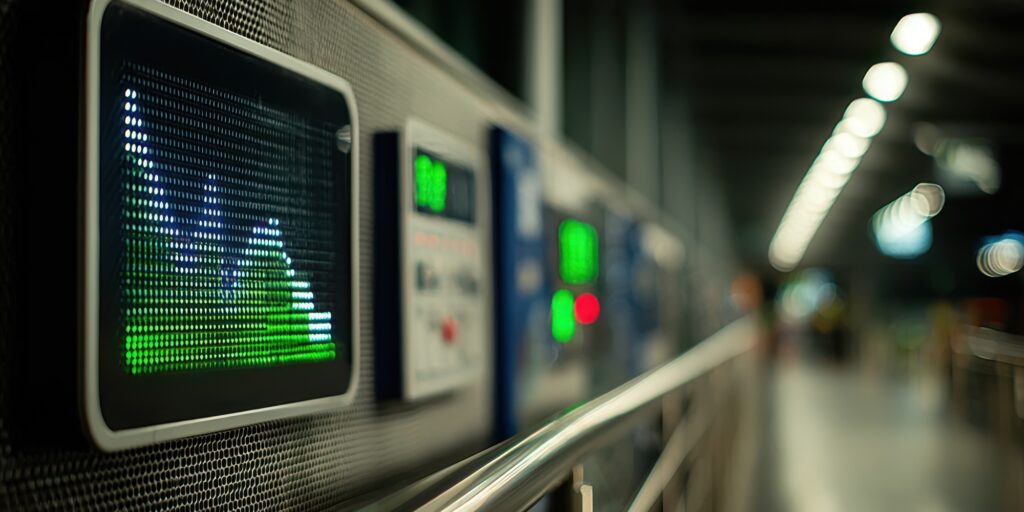
Guide
Environmental Monitoring Tools & Equipment: 2025 Buyer’s Guide
Environmental monitoring equipment help teams measure air, noise, heat, weather, gases, and more—so you can protect people, comply with regulations, and run safer operations.
In this guide we cover the top environmental tools on the market. We also share information on how to choose the right tool, calibration & QA/QC best practices, a compliance map linking standards to instruments, and more.
Environmental Monitoring Equipment: A–Z
- Air Velocity—TSI VelociCalc 9515
- Flow Meter—Mesa Labs Bios Defender 510
- Gas Detection—SPX MGD2002
- Heat Stress Monitors—TSI QUESTemp 44/46/48N
- Noise Monitoring Equipment—Casella CEL-350IS
- Noise Monitoring Equipment—Casella CEL-633.A1 Kit
- Noise Monitoring Equipment—TSI Quest Edge 8 Dosimeter
- Survey—Leica BLK ARC Laser Scanner
- Survey—Trimble X7
- Toxic Air Monitoring—dnota Bettair® Air Quality Mapping
- Toxic Air Monitoring—ISC MX6 iBrid Multi-Gas Detector
- Toxic Air Monitoring—RAE Systems MiniRAE 3000 PID
- Toxic Air Monitoring—RAE Systems MultiRAE Lite
- Toxic Air Monitoring—RAE Systems MultiRAE Plus
- Toxic Air Monitoring—RAE Systems ppbRAE 3000
- Toxic Air Monitoring—RAE Systems QRAE
- Toxic Air Monitoring—RAE Systems QRAE 3 (Four Gas Monitor)
- Toxic Air Monitoring—RAE Systems UltraRAE

Best Environmental Monitoring Equipment & Tools [New for 2025]
Below is a long list of the top environmental monitoring equipment, updated for this year.
If you’re looking for an EM tool in a certain category, you can use this menu to jump straight to what you need:
- Air Environmental Monitoring Tools
- Noise & Vibration Environmental Monitoring Tools
- Microclimate & Meteorology Environmental Monitoring Tools
Air Environmental Monitoring Tools
Air monitoring covers particulates (PM10/PM2.5/PM1), gases/VOCs, and airflow/ventilation checks for both ambient and workplace programs.
Air Velocity
Measures air speed and temperature to verify ventilation performance and troubleshoot airflow problems.
1. TSI VelociCalc 9515—Air velocity meter
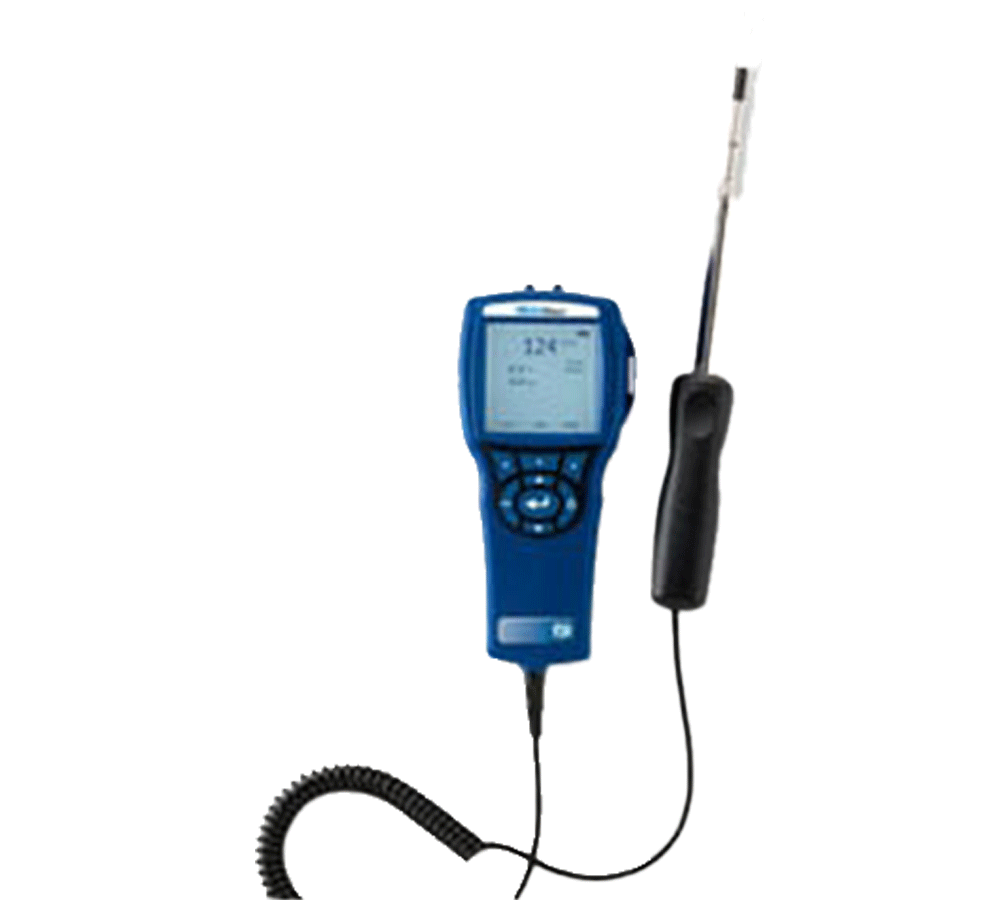
The VelociCalc 9515 measures air speed and temperature for HVAC testing, ventilation checks, and face velocity spot measurements.
- Portable with probe for point checks
- Fast readings for commissioning
- Ideal for ventilation surveys
Toxic Air Monitoring
Ambient and area monitoring for particulates and gases with cloud analytics for hot spots and trends.
1. Bettair Air Quality Mapping System—Dust and air pollution monitor
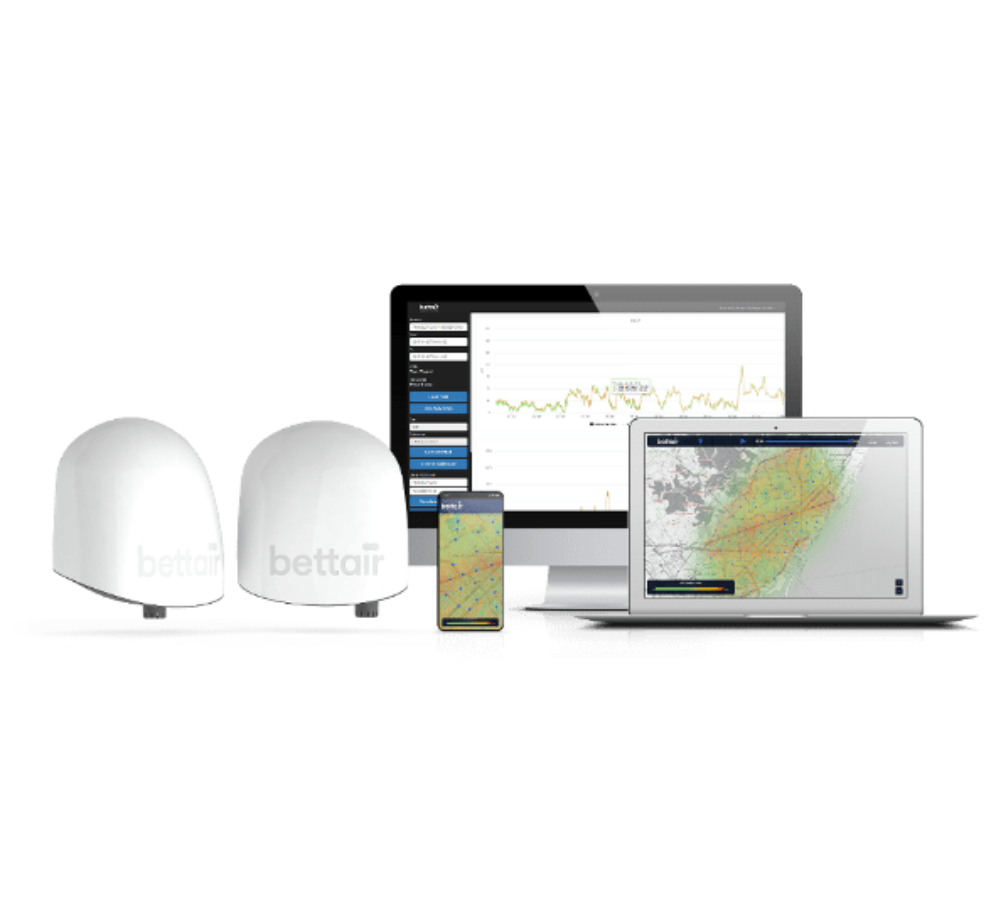
Networked sensors deliver high-resolution air quality mapping for PM1, PM2.5, PM10 and gases like NO₂, CO, and O₃—ideal for cities, industrial sites, and agencies.
- Georeferenced network analytics
- Low-maintenance with remote calibration
- Cloud dashboards for trends
Gas Detection
Leak finding and general gas screening for maintenance and safety teams.
1. SPX MGD2002—Gas leak detector

Portable leak detector for fast pinpointing of gas leaks during maintenance and commissioning.
- Rapid response and clear indication
- Rugged handheld design
- Ideal for routine leak checks
2. ISC MX6 iBrid—Multi-gas detector
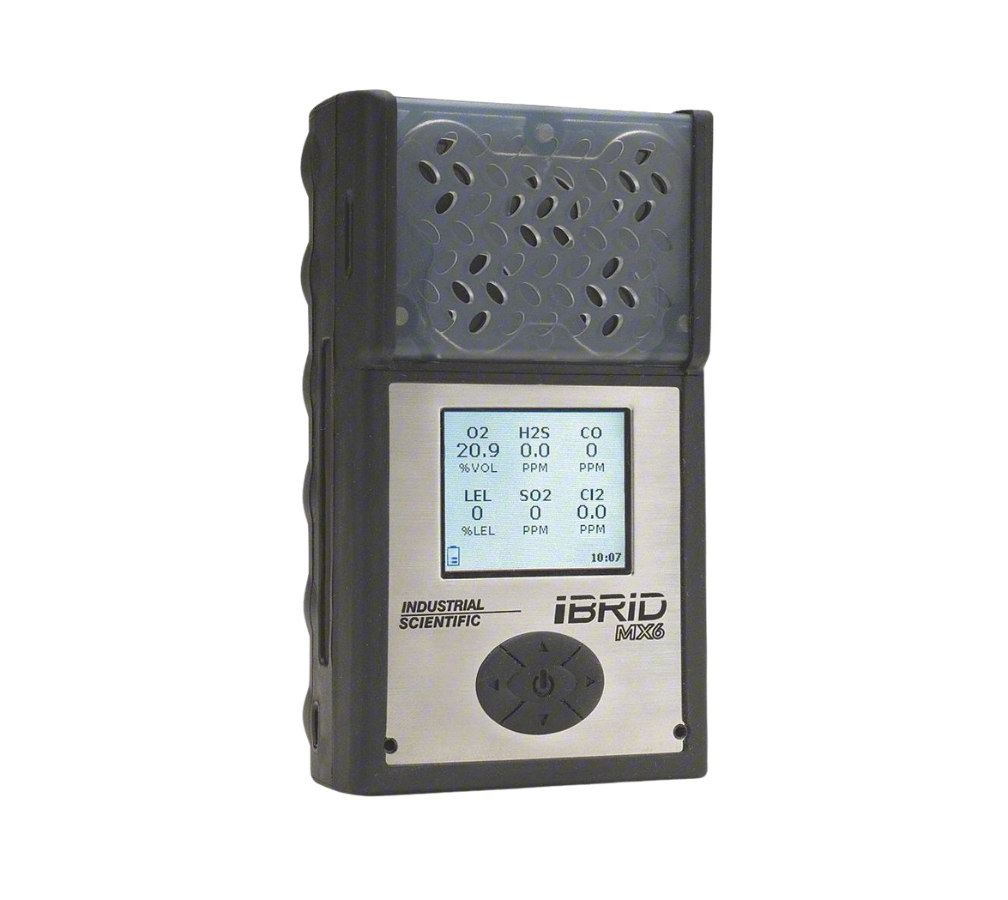
Versatile multi-gas detector with smart sensors for complex industrial environments.
- Large color display
- Customizable sensor suites
- Industrial durability
3. RAE Systems MiniRAE 3000—PID VOC monitor

Portable photoionization detector for fast, sensitive VOC screening in industrial hygiene and emergency response.
- Wide ppb–ppm range
- Rugged, field-proven design
- Real-time data logging
4. RAE Systems ppbRAE 3000—Ultra-sensitive PID
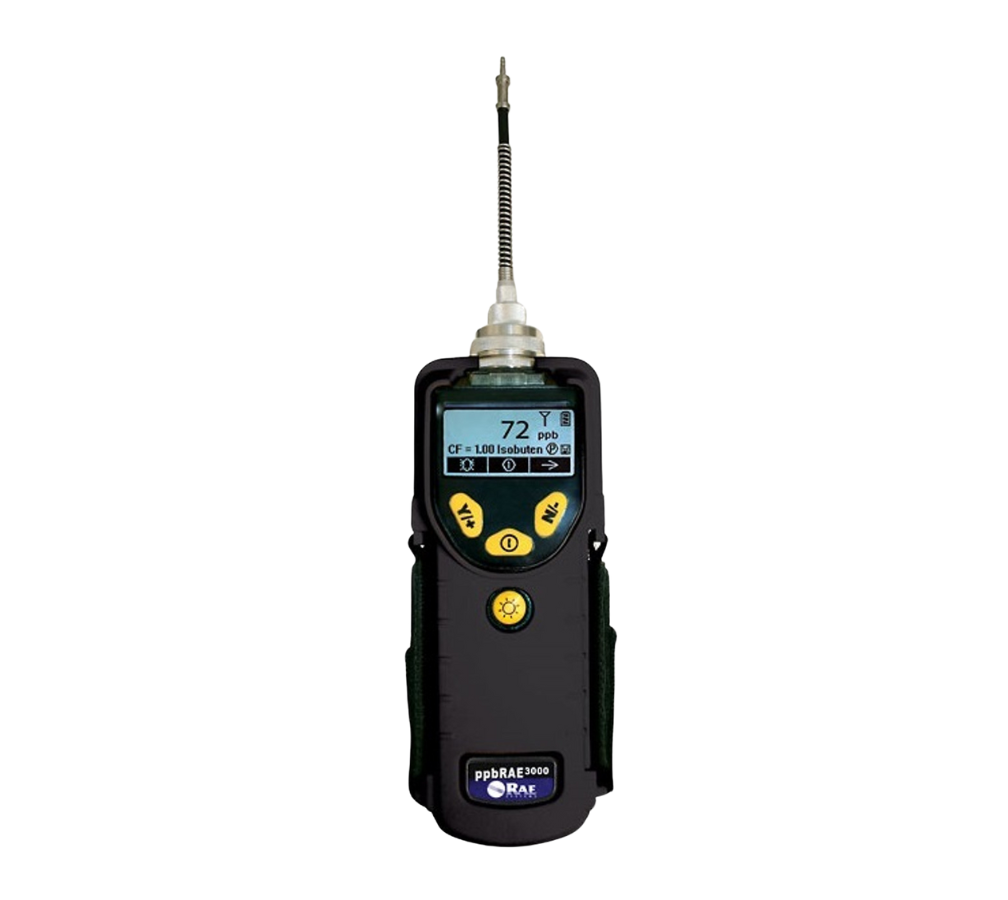
High-sensitivity PID for ppb-level VOC detection when very low concentrations matter.
- ppb-level resolution
- Ideal for leak tracing
- Flexible sensor options
5. RAE Systems MultiRAE Lite—Flexible multi-gas
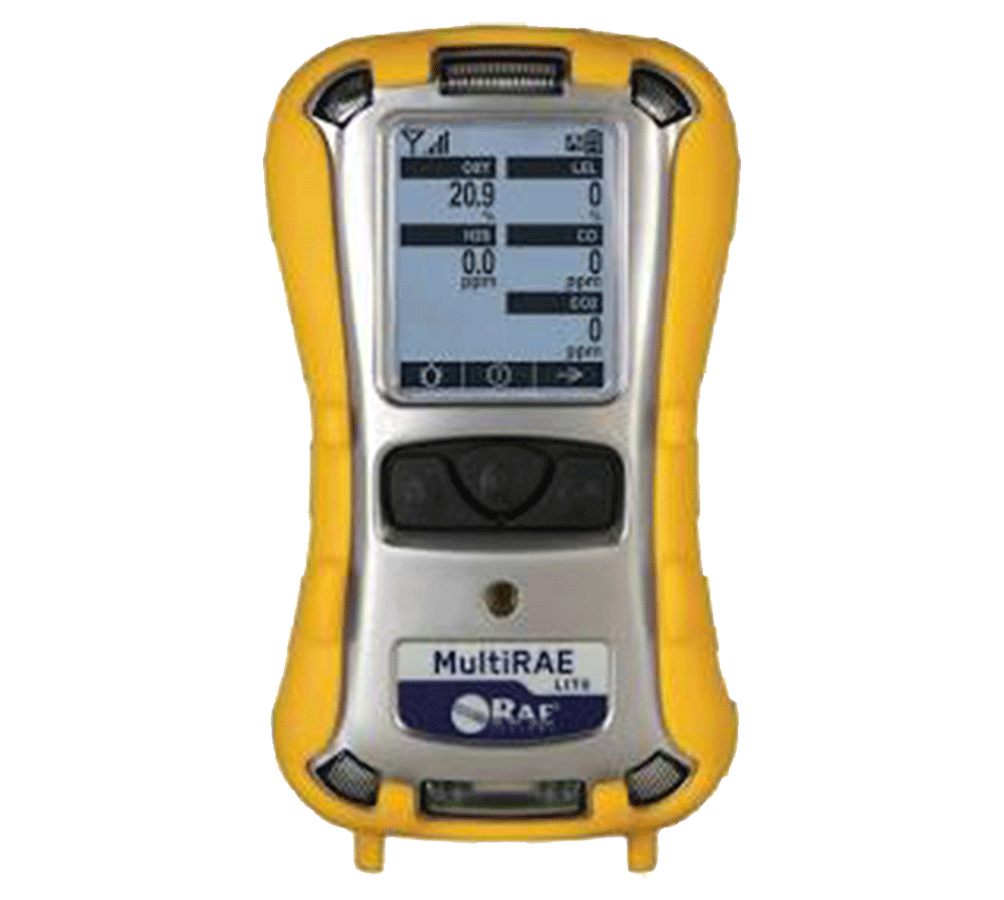
Configurable multi-gas detector supporting PID, LEL, and tox sensors for personal protection and leak detection.
- Up to six gases
- Pumped or diffusion
- Wireless options
6. RAE Systems MultiRAE Plus—Advanced multi-gas

Multi-gas platform with real-time comms for confined space and hazardous environments.
- Flexible sensor suites
- Rugged, portable build
- Audit-ready logging
7. RAE Systems QRAE—Four-gas monitor
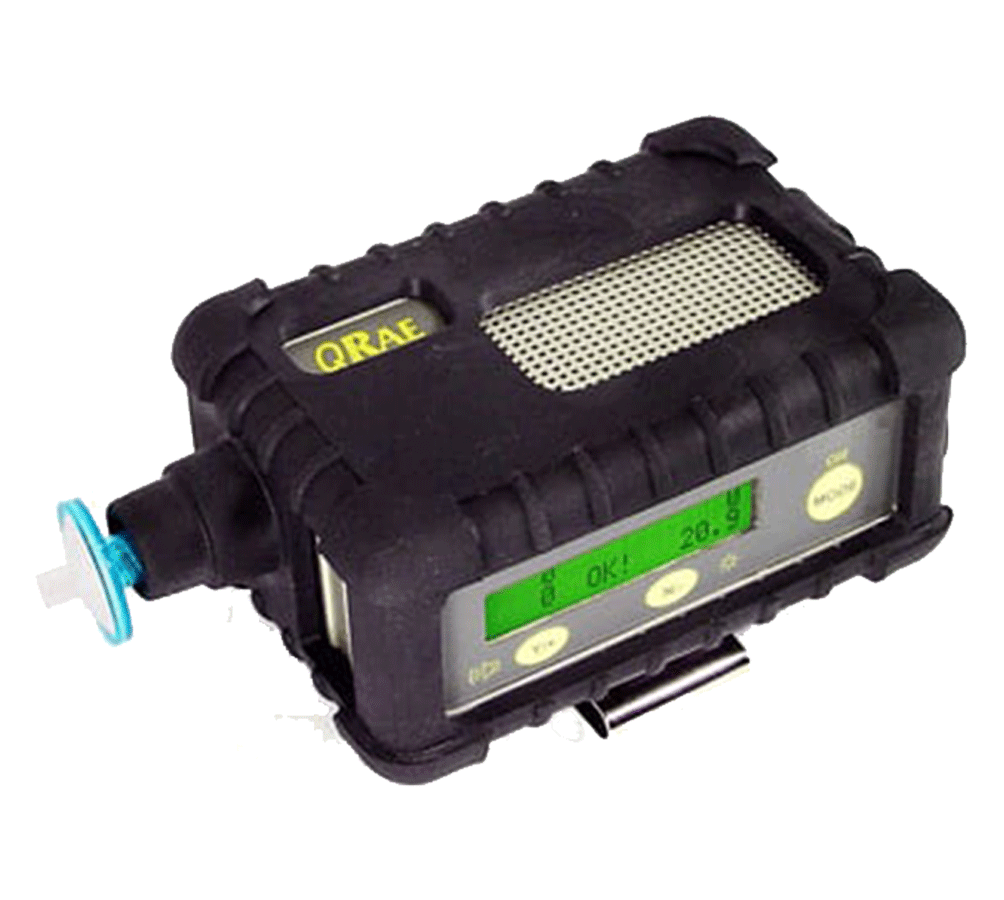
- O₂, LEL, CO, H₂S
- Up to 18-hour battery
- Intuitive operation
8. RAE Systems QRAE 3—Wireless four-gas

Compact, wireless-ready four-gas monitor that improves incident visibility and response.
- Wireless real-time data
- Rugged, compact design
- Confined space ready
9. RAE Systems UltraRAE—Benzene-specific PID

Benzene-specific PID for hazardous air investigations and industrial hygiene programs.
- Rapid benzene screening
- Portable, rugged housing
- Data logging for audits
QA/QC & Calibration (Air Sampling Support)
Dry flow calibration to set and verify air sampling pump flow rates for compliance sampling and QA/QC.
1. Mesa Labs Bios Defender 510—Dry flow calibrator
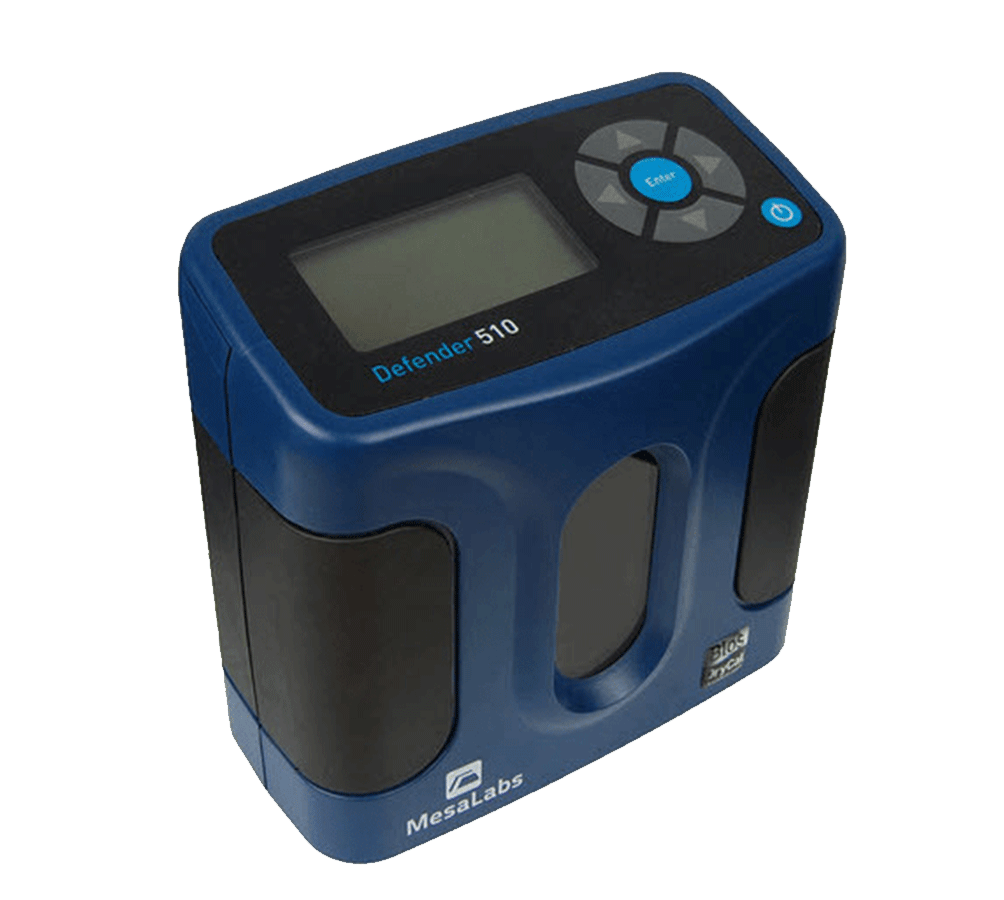
Precision dry flow calibrator used to set and verify air sampling pump flow rates for compliance sampling and QA/QC.
- Fast, traceable calibrations
- Volumetric and standardized flow
- Compact, field-ready design
Noise & Vibration Environmental Monitoring Tools
Dosimeters track personal exposure; sound level meters measure area and environmental noise.
1. Casella CEL-350IS—Noise dosimeter (IS)
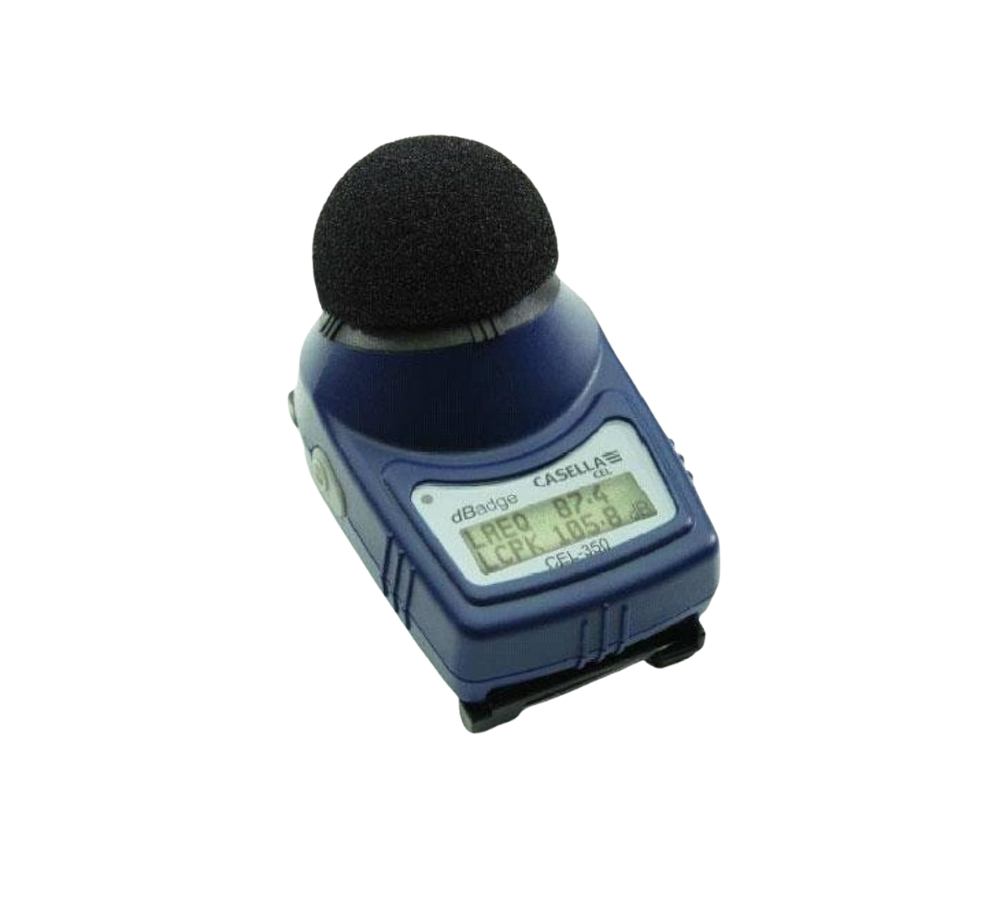
Intrinsically safe personal dosimeter for hazardous areas requiring compliant dose/TWA monitoring.
- Rugged and lightweight
- Shift-long battery life
- Time-history logging
2. Casella CEL-633.A1—Class 1 SLM kit

Class 1 sound level meter kit for environmental surveys, construction, and long-term noise monitoring.
- Leq and octave bands
- Environmental kit options
- Survey-grade accuracy
3. TSI Quest Edge 8—Noise dosimeter (IS)
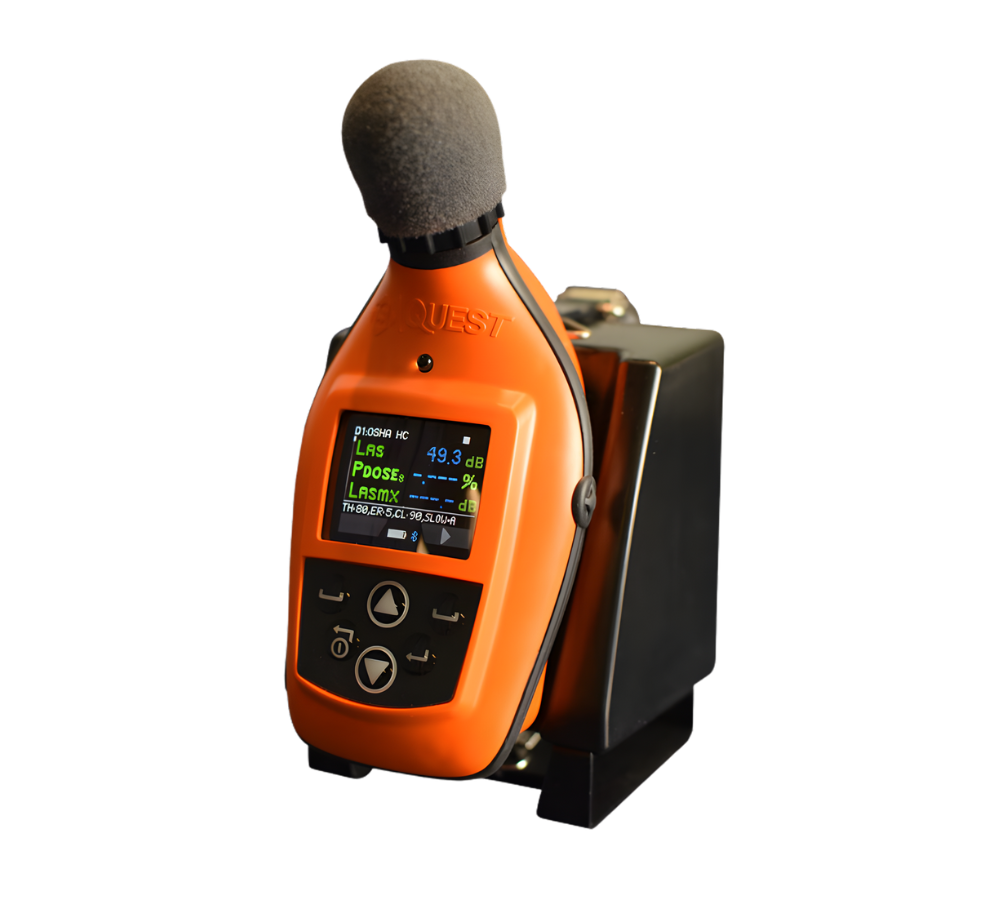
Intrinsically safe, cable-free dosimeter for full-shift personal noise exposure tracking in industrial environments.
- Dose, TWA, time-history
- IEC/ANSI compliant
- Wear near the ear
Microclimate & Meteorology Environmental Monitoring Tools
WBGT instruments for indoor and outdoor programs to manage worker heat risk; weather measurements for planning and safety.
1. TSI QUESTemp 44/46/48N—WBGT meters
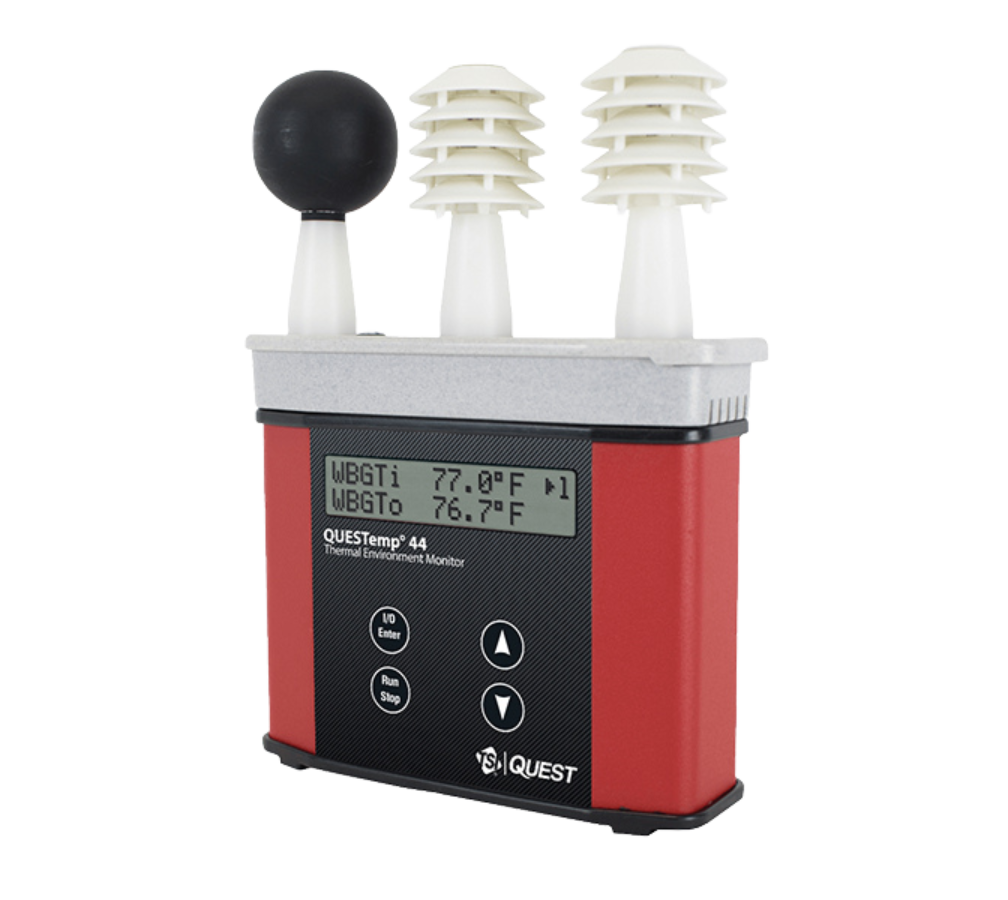
WBGT meters for indoor and outdoor heat stress programs with logging, alarms, and waterless sensors.
- Indoor/outdoor WBGT
- Long battery life
- Data logging & reports
How to Choose the Right Environmental Monitoring Tool
Choosing starts with the outcome you need.
Are you protecting workers or characterizing a site? Do you need continuous monitoring or a quick check?
Or are you monitoring a data center, where the main focus is on server conditions and other equipment?
Use the decision points below, then jump to the products that fit.
Decision Tree
- Do you need worker exposure or area/ambient data?
- If worker exposure: personal wearable vs. spot check—how long is the task?
- If area/ambient: short survey or continuous monitoring with alerts?
- Are you tracking gases/VOCs, particulates/air quality, heat, noise, or airflow?
- Any compliance/QC requirements (e.g., pump flow verification) that drive tool choice?
Outcomes at a Glance
| Outcome | What you need | When it’s best | MFE products |
|---|---|---|---|
| Noise—worker exposure | Personal dosimeter | Shift-long dose/TWA tracking | TSI Quest Edge 8 |
| Noise—area/environmental | Class 1 sound level meter | Surveys, construction, long-term logging | Casella CEL-633.A1 Kit |
| Gas/VOC leak finding | Leak detector or PID | Maintenance checks, troubleshooting | SPX MGD2002, MiniRAE 3000, ppbRAE 3000, ISC MX6 iBrid |
| Heat program setup | WBGT heat stress monitor | Indoor/outdoor WBGT with alarms and logging | TSI QUESTemp 44/46/48N |
| Ambient air quality mapping | Networked particulate/gas nodes | Continuous area monitoring, hotspots, trends | dnota Bettair® |
| Air movement & ventilation | Air velocity meter | HVAC testing, face velocity spot checks | TSI VelociCalc 9515 |
| Compliance/QC for sampling | Dry flow calibrator | Pre/post pump checks, traceable flow | Bios Defender 510 |
Fast Picks
- Noise exposure (personal) → TSI Quest Edge 8
- Environmental noise survey → Casella CEL-633.A1 Kit
- VOC leak check → SPX MGD2002
- High-sensitivity VOCs → ppbRAE 3000
- Heat stress program → TSI QUESTemp 44/46/48N
- Air quality network → dnota Bettair®
- Airflow troubleshooting → TSI VelociCalc 9515
- Pump flow verification → Bios Defender 510
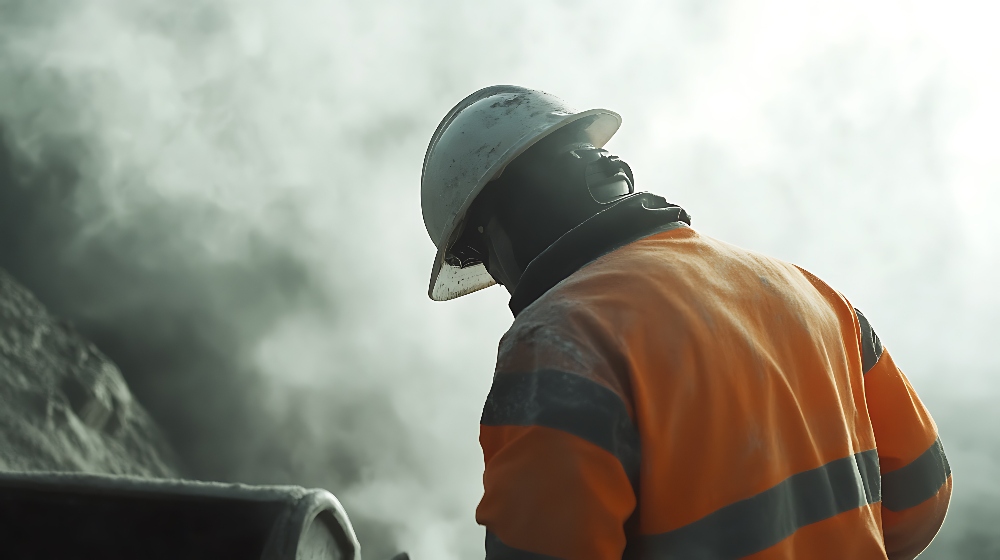
Calibration & QA/QC: Make Your Data Defensible
Good data starts with verified instruments. Do quick pre-use checks, document what you did, and confirm performance again after use. For pumps and sensors, keep a traceable path back to a known reference.The Minimum You Should Do
- Pre-check: visual inspection (battery, cables, inlets/windscreens, damage), then power-on self-test.
- Zero/span or bump (where applicable): confirm the instrument responds to a known reference or gas.
- Verify flow (for air sampling pumps): set and confirm target flow with a dry flow calibrator.
- Record traceability: date/time, user, instrument model/serial, reference/cylinder lot and expiry.
- Run the task/survey with notes on setup, ambient conditions, and any anomalies.
- Post-check: repeat zero/bump or flow check; compare to pre-check and note any drift.
- If a post-check fails your rule-of-thumb tolerance, flag the associated data for review.
What to Verify & When
| Instrument | Verify | Typical interval | Pass/Fail rule of thumb | Notes |
|---|---|---|---|---|
| Air sampling pump | Flow rate (set & verify) | Before and after each sample | Within ±5% of target (site policy may vary) | Use a dry flow calibrator such as the Bios Defender 510 |
| Noise dosimeter | Function/self-test; acoustic check | Before deployment; post if required | Self-test passes; acoustic check within calibrator tolerance | Document calibrator model/serial and level used |
| Sound level meter (Class 1) | Acoustic calibrator check | Before and after each survey | Reading within calibrator tolerance and stable | Log temperature, windscreen use, weighting/range |
| WBGT heat stress meter | Sensor sanity/consistency check | Daily when in use | Stable readings; no unexpected jumps | Maintain wet bulb (if used); allow acclimation time |
| PID / multi-gas | Zero/span or bump response | Daily when in use; after sensor changes | Response within expected window; no expired gas | Track gas lot/expiry; keep PID lamp clean |
| Air velocity meter | Zero/baseline and probe check | Per use | Stable zero; readings consistent on repeat | Inspect probe/cable; avoid thermal drafts |
Traceability & Records
- Capture instrument model, serial number, and firmware (if applicable).
- Keep calibration certificates and note expiration/next due dates.
- Record reference standards: gas lot/expiry, calibrator model/serial, last certification.
- Document uncertainty/tolerances used for pass/fail decisions.
- Retain raw logs, check sheets, and photos of setups for the required period.
- Have a named reviewer sign off on checks and any data flags.
Field QC Checklist (Print & Use)
Compliance Map: Standards, Programs, and the Right Tools
Occupational vs. ambient requirements point to different measurements and instruments. Use this map to connect common frameworks to the right environmental monitoring tools and MFE products.Key Thresholds at a Glance
| Type | Standard / Program | Metric | Limit / Threshold | Averaging | Authority / Reference |
|---|---|---|---|---|---|
| Noise | OSHA PEL | A-weighted sound (dose/TWA) | 90 dBA | 8-hour TWA | OSHA 1910.95 • eCFR |
| Noise | OSHA Action Level | A-weighted sound (dose/TWA) | 85 dBA (hearing conservation trigger) | 8-hour TWA | OSHA 1910.95 • eCFR |
| Heat | ISO 7243 (screening) | WBGT index | Task- and clothing-adjusted thresholds | Shift/program guidance | ISO 7243 |
| Ambient Air | EPA NAAQS (PM2.5, annual) | PM2.5 concentration | 9.0 µg/m³ | Annual (primary) | EPA NAAQS Table • PM Standards • 2024 PM rule (PDF) |
| Ambient Air | EPA NAAQS (PM2.5, 24-hour) | PM2.5 concentration | 35 µg/m³ | 24-hour | EPA NAAQS Table |
| Ambient Air | EPA NAAQS (PM10, 24-hour) | PM10 concentration | 150 µg/m³ | 24-hour | EPA NAAQS Table |
| Occupational Dust | OSHA Silica (PEL / Action Level) | Respirable crystalline silica | 50 µg/m³ PEL; 25 µg/m³ AL | 8-hour TWA | OSHA 1910.1053 • eCFR |
From Standard to Instrument
| Standard / Need | What you measure | Instrument type | MFE products |
|---|---|---|---|
| OSHA Noise (1910.95) — Worker exposure | Dose / TWA | Personal dosimeter | TSI Quest Edge 8 |
| OSHA Noise (1910.95) — Area/environmental | Leq / levels | Class 1 sound level meter | Casella CEL-633.A1 Kit |
| Heat screening (ISO 7243) | WBGT | Heat stress monitor | TSI QUESTemp 44/46/48N |
| Ambient PM (EPA NAAQS) | PM trends / hotspots | Networked particulate/gas nodes | dnota Bettair® |
| Leak/VOC best practice | VOCs / leaks | PID / leak detector / multi-gas | SPX MGD2002, MiniRAE 3000, ppbRAE 3000, ISC MX6 iBrid |
| Ventilation checks | Air speed | Air velocity meter | TSI VelociCalc 9515 |
| Sampling defensibility | Pump flow (pre/post) | Dry flow calibrator | Mesa Labs Bios Defender 510 |
OSHA / NIOSH / ACGIH (Occupational)
OSHA sets enforceable PELs; NIOSH RELs and ACGIH TLVs are commonly used for more conservative targets and program design. → OSHA Noise: 1910.95 • eCFR → OSHA Silica: 1910.1053 • eCFR → NIOSH RELs: NIOSH Pocket Guide → ACGIH TLVs: GuidelinesEPA Ambient Air (Community/Perimeter)
NAAQS set ambient benchmarks; FRM provides the reference method while FEM/continuous systems manage real-time operations and trends. → EPA NAAQS Table • PM Standards • 2024 PM rule (PDF)Environmental Monitoring Equipment & Tools FAQ
This FAQ is for safety/IH teams, facilities, construction, utilities, and municipalities comparing environmental monitoring equipment for real-world programs.
Here are answers to commonly asked questions about environmental monitoring tools and equipment.
What is environmental monitoring?
Environmental monitoring is the ongoing measurement of environmental conditions—such as air, water, noise, and microclimate—to understand risk and guide decisions. It turns raw readings into actions that protect people, products, and operations.
What are the tools used in environmental monitoring?
Common tools include handheld meters, wearables/personal sensors, area monitors and fixed instruments, samplers (grab/composite), and data loggers/DAQ. Mobile platforms can carry sensors for mapping.
Why is environmental monitoring important?
It reduces incidents, speeds response to exceedances, and provides defensible records. Programs also improve quality, uptime, and community outcomes while helping teams manage costs.
What are the four main types of environmental monitoring?
Air, water, noise and vibration, and microclimate/meteorology. Many programs blend multiple types—for example, dust + noise + weather on construction sites.
What is the difference between environmental monitoring tools and environmental monitoring systems?
Tools (devices) capture measurements in the field. Environmental monitoring systems connect many tools, manage data and alerts, provide dashboards and reporting, and integrate with other software.
How do I choose between personal and area monitoring?
Use personal instruments to measure what a worker actually experiences (dosimeters, wearables). Use area/ambient tools for site impacts, process checks, or community trends.
How do I choose which parameters to monitor?
Start with your risks, processes, and stakeholders, then map parameters that indicate those risks. Consider regulatory or internal limits, decision triggers, and the feasibility of accurate, reliable measurement.
How often should instruments be calibrated or validated?
Follow manufacturer guidance and your QA/QC plan, adjusting for criticality, drift behavior, and operating conditions. Many programs combine scheduled calibration with interim checks and post-event verification.
What does QA/QC mean in environmental monitoring?
QA/QC covers procedures that ensure data are fit for purpose, including calibration, verification, data validation, and documentation. Good QA/QC reduces false alarms and supports audits and investigations.
Which tools do I need for ambient air monitoring around a facility?
Use continuous particulate/gas stations with dashboards and alerts. A proven option is the Bettair networked PM/gas system. For selection context, see Air tools.
Which gas detection tool should I use for leak finding vs. exposure control?
For rapid leak pinpointing, use a handheld leak detector such as the SPX MGD2002. For exposure control and confined space, use a multi-gas detector like the ISC MX6. VOC screening uses PIDs like the MiniRAE 3000 or ppbRAE 3000.
What’s the difference between a PID and a multi-gas detector?
PIDs measure total VOCs with high sensitivity (ppb–ppm) but don’t speciate gases. Multi-gas detectors use electrochemical/IR/catalytic sensors for toxics, LEL, and O₂—ideal for personal safety.
How do I calibrate or verify my instruments before and after use?
Do a pre-check (visual + self-test), zero/span or bump, then a post-check; document traceability. For pump flow, use a dry flow calibrator like the Bios Defender 510.
How often should I check pump flow on air sampling campaigns?
Before and after each sample; many programs also verify mid-run on long samples. Keep results within your site tolerance (commonly ±5%).
What’s the difference between a noise dosimeter and a sound level meter?
A dosimeter is worn by the worker to calculate dose/TWA; a sound level meter measures area or environmental levels (Leq, octave bands). Examples: Quest Edge 8 and CEL-633.A1.
How is heat stress measured and when should I use WBGT?
WBGT combines air temperature, humidity, radiant heat, and airflow to estimate heat strain. Use it for screening work/rest guidance and documentation. See the QUESTemp 44/46/48N.
How do EM tools map to OSHA/EPA/ISO requirements?
Noise programs reference OSHA 1910.95; silica and dust reference OSHA 1910.1053; ambient PM trends align with EPA NAAQS; heat screening often follows ISO 7243.
Can I rent environmental monitoring equipment instead of buying?
Yes—many tools are available as rentals to validate a use case before purchase. Request a quote from each product page (e.g., VelociCalc 9515, MiniRAE 3000).
What data should I keep for audit and compliance?
Capture instrument ID/serial, firmware, calibration certificates, zero/span or flow checks, reference gas/lot, environmental notes, and photos of setups. Use the printable checklist in Calibration & QA/QC.
